10 Days in Europe; 10 New Things to Try
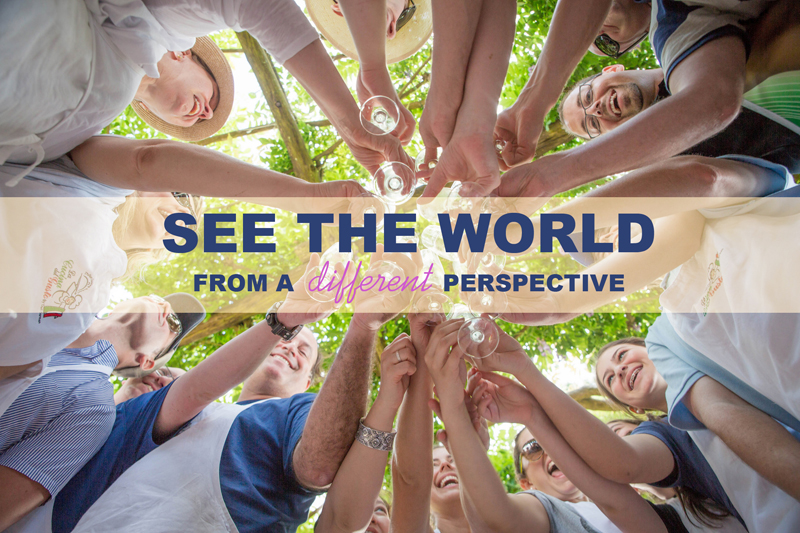
 There’s a first time for everything. I just didn’t expect to have so many new experiences during one European vacation. Competitours intrigued me from the moment I heard about it. The tour company takes several teams of two across the pond to compete in quirky point-earning challenges over 10 days for the chance to win a cash prize. Other than the CBS series Amazing Race, I’d never heard of anything like it for regular folks who would prefer not to have their lives televised for the whole world to see. Now in its sixth year, Competitours has debuted what owner Steve Belkin calls “Version 2.0,” with new challenges and new ways to broaden your horizons. For starters, you have to completely relinquish control of the travel planning process. Each day of the trip is a complete surprise to participants, who have anywhere from 24 to 48 hours of notice to prepare for challenges. Destinations vary, but it’s not uncommon for the trip’s itinerary to include five countries. The outside-the-box adventure helped snap me — a seasoned traveler — out of a vacation rut by throwing me into certain situations I wouldn’t normally think to get myself into. Belkin’s belief “sight doing,” instead of sightseeing, turns out to be an ideal formula for gaining a better appreciation for other cultures, while learning a little about yourself, and what you are (or are not) capable of, along the way. Here is a sampling of the new things I tried on the 2014 trip; some of which you might expect to see on a future Competitours adventure, not to mention something to check out if you happen to find yourself in one of these destinations: Day One: Eat Horse Meat in Belgium
There’s a first time for everything. I just didn’t expect to have so many new experiences during one European vacation. Competitours intrigued me from the moment I heard about it. The tour company takes several teams of two across the pond to compete in quirky point-earning challenges over 10 days for the chance to win a cash prize. Other than the CBS series Amazing Race, I’d never heard of anything like it for regular folks who would prefer not to have their lives televised for the whole world to see. Now in its sixth year, Competitours has debuted what owner Steve Belkin calls “Version 2.0,” with new challenges and new ways to broaden your horizons. For starters, you have to completely relinquish control of the travel planning process. Each day of the trip is a complete surprise to participants, who have anywhere from 24 to 48 hours of notice to prepare for challenges. Destinations vary, but it’s not uncommon for the trip’s itinerary to include five countries. The outside-the-box adventure helped snap me — a seasoned traveler — out of a vacation rut by throwing me into certain situations I wouldn’t normally think to get myself into. Belkin’s belief “sight doing,” instead of sightseeing, turns out to be an ideal formula for gaining a better appreciation for other cultures, while learning a little about yourself, and what you are (or are not) capable of, along the way. Here is a sampling of the new things I tried on the 2014 trip; some of which you might expect to see on a future Competitours adventure, not to mention something to check out if you happen to find yourself in one of these destinations: Day One: Eat Horse Meat in Belgium 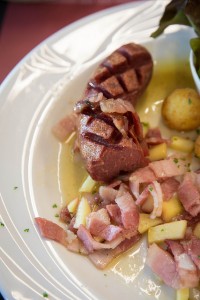 While Americans vehemently reject the idea of eating horse meat, one billion people around the world eat it regularly, including Belgium, one of the leading consumers. Even though, there was no edict requiring us to eat it, I gave it a go at Ghent’s Groot Vliehuis (Butcher’s Hall). The covered meat market dates to the 15th century, and currently serves as a restaurant and gift shop for local Flemish products. Niels Staelens, the server at the restaurant, guided my partner and I through the menu and ultimately picked the best dish, consisting of a garlic-fried horse sausage served with bacon and apples, accompanied by potatoes and a small salad. The sausage, which had a deep-red color, was tender and lean and a bit sweet in taste, but that could have been from the apples. I didn’t want to like it (I like horses!), but it turned out to be quite tasty, and as it turns out, horse meat has more protein and less fat than lean beef. Day Two: Fence in The Netherlands
While Americans vehemently reject the idea of eating horse meat, one billion people around the world eat it regularly, including Belgium, one of the leading consumers. Even though, there was no edict requiring us to eat it, I gave it a go at Ghent’s Groot Vliehuis (Butcher’s Hall). The covered meat market dates to the 15th century, and currently serves as a restaurant and gift shop for local Flemish products. Niels Staelens, the server at the restaurant, guided my partner and I through the menu and ultimately picked the best dish, consisting of a garlic-fried horse sausage served with bacon and apples, accompanied by potatoes and a small salad. The sausage, which had a deep-red color, was tender and lean and a bit sweet in taste, but that could have been from the apples. I didn’t want to like it (I like horses!), but it turned out to be quite tasty, and as it turns out, horse meat has more protein and less fat than lean beef. Day Two: Fence in The Netherlands 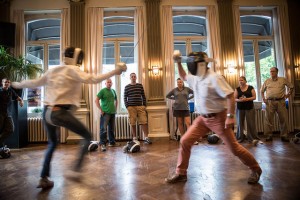 Until this trip, I had never lunged at another person with a long blade. But now that I’ve tried fencing, I can definitively say my less-than-swashbuckling performance looked nothing like the choreographed sword fights I’ve seen in movies like Zorro, The Princess Bride or The Three Musketeers — not after one workshop at least. Maastricht, a small town in The Netherlands, was an ideal setting to try out the “honorable” way European gentlemen would resolve conflicts back in the day. The town has a unique link to D’Artagnan, the real-life captain of the Musketeers, who inspired Alexandre Dumas’ character in The Three Musketeers. D’Artagnan lived by the sword, but the real guy died from a musket ball to the throat during the Siege of Maastricht only a few miles away from where the class took place. Day Three: Fire a High-Powered Pellet Gun in The Netherlands
Until this trip, I had never lunged at another person with a long blade. But now that I’ve tried fencing, I can definitively say my less-than-swashbuckling performance looked nothing like the choreographed sword fights I’ve seen in movies like Zorro, The Princess Bride or The Three Musketeers — not after one workshop at least. Maastricht, a small town in The Netherlands, was an ideal setting to try out the “honorable” way European gentlemen would resolve conflicts back in the day. The town has a unique link to D’Artagnan, the real-life captain of the Musketeers, who inspired Alexandre Dumas’ character in The Three Musketeers. D’Artagnan lived by the sword, but the real guy died from a musket ball to the throat during the Siege of Maastricht only a few miles away from where the class took place. Day Three: Fire a High-Powered Pellet Gun in The Netherlands 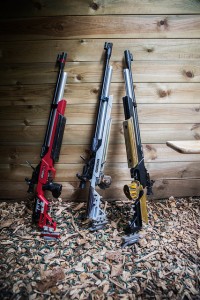 I’m staring down the barrel of an air rifle at a grid of tiny cylindrical targets, barely the size of a pinky finger. The problem is, none of them stay in the sights long enough to guarantee a good shot. The heavy gun makes my arms shake under its weight, so at this rate, there’s no way I’ll be able to hit any of the minuscule targets. Finally, I drop to my knees and brace the gun against the table in front of me and fire off three perfect shots. I may have never used an air rifle before, I am a highly experienced shooter . . . with a camera, at least. In the Netherlands, there is no limit to the power of an air rifle, and anyone above the age of 18 can legally buy one. I gave it a shot at Drielandenpunt (“Three Country Point”), which straddles the borders of Germany, The Netherlands and Belgium. In addition to a long and winding labyrinth, the recreational facility has other games and activities, such as archery, crossbow and skeet shooting. Day Four: Do a Via Ferrata in Switzerland
I’m staring down the barrel of an air rifle at a grid of tiny cylindrical targets, barely the size of a pinky finger. The problem is, none of them stay in the sights long enough to guarantee a good shot. The heavy gun makes my arms shake under its weight, so at this rate, there’s no way I’ll be able to hit any of the minuscule targets. Finally, I drop to my knees and brace the gun against the table in front of me and fire off three perfect shots. I may have never used an air rifle before, I am a highly experienced shooter . . . with a camera, at least. In the Netherlands, there is no limit to the power of an air rifle, and anyone above the age of 18 can legally buy one. I gave it a shot at Drielandenpunt (“Three Country Point”), which straddles the borders of Germany, The Netherlands and Belgium. In addition to a long and winding labyrinth, the recreational facility has other games and activities, such as archery, crossbow and skeet shooting. Day Four: Do a Via Ferrata in Switzerland 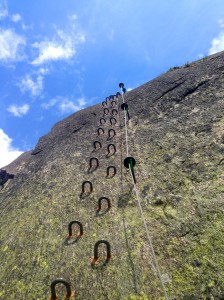 Mountaineering is an immensely popular sport in the Alps, but it’s nothing I’ve ever come close to doing unless you count climbing a wall at the local rock gym. While technical climbing usually requires ample experience and conditioning, the average person can try a Via Ferrata (Italian for “Iron Road”), which is a pre-set climbing route with fixed cables. There are more than 50 in Switzerland, but the Via Ferrata Diavolo — created as a training route for the Swiss Army — is considered a beginner route. All it takes is a head for heights and the proper safety equipment and footwear, which can be rented from a local outfitter, such as Alpina Sport, in nearby Andermatt, Switzerland, where we geared up (a climbing kit with harness, clips and helmet costs 25 Swiss Francs). Day Five: Dine in the Dark in Zurich
Mountaineering is an immensely popular sport in the Alps, but it’s nothing I’ve ever come close to doing unless you count climbing a wall at the local rock gym. While technical climbing usually requires ample experience and conditioning, the average person can try a Via Ferrata (Italian for “Iron Road”), which is a pre-set climbing route with fixed cables. There are more than 50 in Switzerland, but the Via Ferrata Diavolo — created as a training route for the Swiss Army — is considered a beginner route. All it takes is a head for heights and the proper safety equipment and footwear, which can be rented from a local outfitter, such as Alpina Sport, in nearby Andermatt, Switzerland, where we geared up (a climbing kit with harness, clips and helmet costs 25 Swiss Francs). Day Five: Dine in the Dark in Zurich  The way we see the world influences our perception of it. So, it’s hard for me to imagine what it would be like to lose my vision and depend on my other faculties to compensate. Fumbling through a meal served in the dark at Blindekuh in Zurich, Switzerland, changed all that. The world’s first dining-in-the-dark establishment is more than a restaurant with a novel idea to turn out the lights, though; it’s an organization that provides employment opportunities for more than 30 visually impaired people. At the same time, diners get valuable insight on functioning in the dark while filling their bellies with delicious, artfully prepared food made with fresh, seasonal ingredients. The “art” of eating it is another story. As I sat hunched over the table with one napkin tucked in my shirt and another draped on my lap, I carefully felt around the plate with my hands — never bothering to use a fork or spoon. The senses of smell, touch and taste were hypercritical for identifying each delectable morsel that came to my lips. While I could tell they were trying to kick into high gear, they still betrayed what I thought I knew about food and how it tastes. I’ve been in the dark all this time, but I was happy to see the light. Day Six: Make Gelato in Italy
The way we see the world influences our perception of it. So, it’s hard for me to imagine what it would be like to lose my vision and depend on my other faculties to compensate. Fumbling through a meal served in the dark at Blindekuh in Zurich, Switzerland, changed all that. The world’s first dining-in-the-dark establishment is more than a restaurant with a novel idea to turn out the lights, though; it’s an organization that provides employment opportunities for more than 30 visually impaired people. At the same time, diners get valuable insight on functioning in the dark while filling their bellies with delicious, artfully prepared food made with fresh, seasonal ingredients. The “art” of eating it is another story. As I sat hunched over the table with one napkin tucked in my shirt and another draped on my lap, I carefully felt around the plate with my hands — never bothering to use a fork or spoon. The senses of smell, touch and taste were hypercritical for identifying each delectable morsel that came to my lips. While I could tell they were trying to kick into high gear, they still betrayed what I thought I knew about food and how it tastes. I’ve been in the dark all this time, but I was happy to see the light. Day Six: Make Gelato in Italy 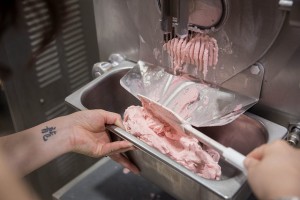 I have eaten my fair share of gelato. I once lived around the corner from a gelatería in Lima, Peru, and every night when I walked home from work, its green neon lights would beckon me. On this trip, I went behind the counter to learn the art of making the delectable treat at Gelateria David in Sorrento, Italy. The trick was figuring out how to make the proper amount with the correct ingredients, but without a recipe as a guide. Growing up, my family made ice cream on the Fourth of July and I would eventually get my opportunity to turn the crank. But, this was a commercial kitchen and gelato differs from American ice cream in its denseness, sugar content and temperature. Needless to say, I belong on the consumption side of the equation. Day Seven: Dance the Tarantella in Sorrento
I have eaten my fair share of gelato. I once lived around the corner from a gelatería in Lima, Peru, and every night when I walked home from work, its green neon lights would beckon me. On this trip, I went behind the counter to learn the art of making the delectable treat at Gelateria David in Sorrento, Italy. The trick was figuring out how to make the proper amount with the correct ingredients, but without a recipe as a guide. Growing up, my family made ice cream on the Fourth of July and I would eventually get my opportunity to turn the crank. But, this was a commercial kitchen and gelato differs from American ice cream in its denseness, sugar content and temperature. Needless to say, I belong on the consumption side of the equation. Day Seven: Dance the Tarantella in Sorrento 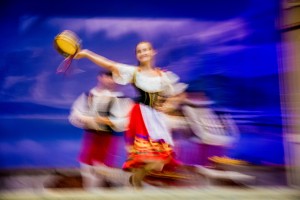 Never under estimate the power of dance! Located in the heel of Italy, the region of Taranto gave its name to a spider that would cause its victim to exhibit hysteric behavior, not to mention convulse uncontrollably. The only known antidote was to dance to particular upbeat music, which would help sweat out the venom. Over time, the therapy morphed into a folk dance that’s still performed today in southern Italy, especially during the grape harvest. After watching a demonstration by performers at the Teatro Tasso in Sorrento, Italy, it was time to not only learn a few dances ranging from easy to difficult, but perform them — on stage. My partner, Jeannie, and I were a sight to behold. Since I am about a foot taller than she, every time I had to grab her waist and twirl around her, I’d miss the mark, invariably clutching her chest instead. Still, we powered through and if anyone noticed the flaw, perhaps there was some entertainment value in it. If you decide to try it, the Teatro Tasso offers tarantella classes for groups. However, you might think twice and just buy a ticket to the Sorrento Musical instead, so you can enjoy a more professional performance. Day Eight: Fight Like a Gladiator in Rome
Never under estimate the power of dance! Located in the heel of Italy, the region of Taranto gave its name to a spider that would cause its victim to exhibit hysteric behavior, not to mention convulse uncontrollably. The only known antidote was to dance to particular upbeat music, which would help sweat out the venom. Over time, the therapy morphed into a folk dance that’s still performed today in southern Italy, especially during the grape harvest. After watching a demonstration by performers at the Teatro Tasso in Sorrento, Italy, it was time to not only learn a few dances ranging from easy to difficult, but perform them — on stage. My partner, Jeannie, and I were a sight to behold. Since I am about a foot taller than she, every time I had to grab her waist and twirl around her, I’d miss the mark, invariably clutching her chest instead. Still, we powered through and if anyone noticed the flaw, perhaps there was some entertainment value in it. If you decide to try it, the Teatro Tasso offers tarantella classes for groups. However, you might think twice and just buy a ticket to the Sorrento Musical instead, so you can enjoy a more professional performance. Day Eight: Fight Like a Gladiator in Rome 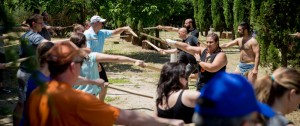 When in Rome, you’re bound to come across opportunistic gladiators charging ridiculous prices for photos with them in front of the Colosseum. Instead of becoming one their unsuspecting victims, we learned how to defend ourselves against an attack from a real gladiator under the tutelage of Legio X Gemina PFD, a group of reenactors, who have appeared in countless movies and TV shows. With wooden swords in hand, we learned the basics on how to block an attack, which didn’t seem to work for me when it came time to put our skills to the test. As it turns out, I’m a lover, not a fighter. It wasn’t a complete lost cause, though. I excelled with a net, which involved twirling it and hurling it at our prey, like cowboy lassoing a bull. In ancient Rome, gladiators fought with an assortment of different weapons, including swords, tridents, daggers, bows and arrows, spears and nets. Perhaps it was the thrill of the chase, but I quite enjoyed snagging a shirtless gladiator wearing little more than a loincloth and a helmet to protect his face. While our gladiator training was arranged for Competitours, there are other opportunities to become a gladiator for a day (click here for more information). Day Nine: Decorate a Mask in Venice
When in Rome, you’re bound to come across opportunistic gladiators charging ridiculous prices for photos with them in front of the Colosseum. Instead of becoming one their unsuspecting victims, we learned how to defend ourselves against an attack from a real gladiator under the tutelage of Legio X Gemina PFD, a group of reenactors, who have appeared in countless movies and TV shows. With wooden swords in hand, we learned the basics on how to block an attack, which didn’t seem to work for me when it came time to put our skills to the test. As it turns out, I’m a lover, not a fighter. It wasn’t a complete lost cause, though. I excelled with a net, which involved twirling it and hurling it at our prey, like cowboy lassoing a bull. In ancient Rome, gladiators fought with an assortment of different weapons, including swords, tridents, daggers, bows and arrows, spears and nets. Perhaps it was the thrill of the chase, but I quite enjoyed snagging a shirtless gladiator wearing little more than a loincloth and a helmet to protect his face. While our gladiator training was arranged for Competitours, there are other opportunities to become a gladiator for a day (click here for more information). Day Nine: Decorate a Mask in Venice 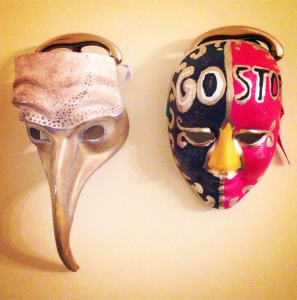
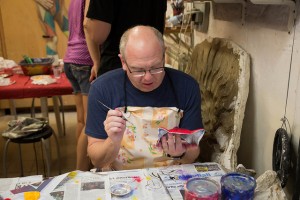 Venetian masks, with unique and ornate designs, are ubiquitous in Venice. Taking a mask-making workshop at Ca’Macana gave us the opportunity to create our own masterpieces, while learning about the fascinating culture that developed from the use of masks in the city. For 800 years, Venice was a prosperous port town, where most of the citizens enjoyed a high standard of living. From all the wealth came some eccentric practices, most notably the penchant for wearing masks. They weren’t just reserved for special occasions; masks were worn as a part of everyday life. Concealing ones identity had its advantages. Servants could be mistaken for masters, immoral behavior could go unpunished and people could speak freely without fear of reprisal. Eventually the practice of wearing masks was banned, except for the first few months of the year. These day, Venetian masks are more commonly associated with Carnevale, or Mardi Gras. We designed our masks as if they could still be worn on a day-to-day basis. Mine is an abstract version of a full beer glass toped with foam that doubles as a beer bong for college parties. Day Ten: Make a Glass Fish (or At Least Attempt It) on the Island of Murano
Venetian masks, with unique and ornate designs, are ubiquitous in Venice. Taking a mask-making workshop at Ca’Macana gave us the opportunity to create our own masterpieces, while learning about the fascinating culture that developed from the use of masks in the city. For 800 years, Venice was a prosperous port town, where most of the citizens enjoyed a high standard of living. From all the wealth came some eccentric practices, most notably the penchant for wearing masks. They weren’t just reserved for special occasions; masks were worn as a part of everyday life. Concealing ones identity had its advantages. Servants could be mistaken for masters, immoral behavior could go unpunished and people could speak freely without fear of reprisal. Eventually the practice of wearing masks was banned, except for the first few months of the year. These day, Venetian masks are more commonly associated with Carnevale, or Mardi Gras. We designed our masks as if they could still be worn on a day-to-day basis. Mine is an abstract version of a full beer glass toped with foam that doubles as a beer bong for college parties. Day Ten: Make a Glass Fish (or At Least Attempt It) on the Island of Murano 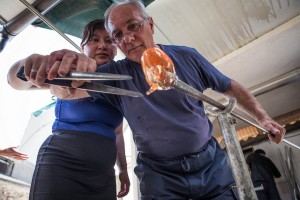 The average tourist doesn’t often have the opportunity to study under the guidance of a glass-blowing master, but that’s exactly what we got to do on the island of Murano, which has been a center for functional and decorative glass art since the 1200s. The glass-blowing studio, tucked behind the showroom at Vetreria Artistica Colleoni has a set of risers for guests to watch demonstrations, but we didn’t stay seated there for long. Pretty soon we were feeling the heat ourselves — tasked with using metal tongs to shape molten glass into a fish. Even though we had several chances to nail it, our creations looked like anything but sea creatures of any kind. Instead of admitting my defeat in this task, I’m going to blame my failure on the set-up, which was clearly geared toward a right-handed artisan. Want to give Competitours a try? The trip costs $3,375 per person double occupancy, and includes 10 nights of lodging, inter-city transportation, challenge activities and $300 toward the grand-prize cash pool. Participants are expected to cover the cost of roundtrip airfare to Europe, local transport, meals and personal expenses. Visit www.competitours.com for more information.
The average tourist doesn’t often have the opportunity to study under the guidance of a glass-blowing master, but that’s exactly what we got to do on the island of Murano, which has been a center for functional and decorative glass art since the 1200s. The glass-blowing studio, tucked behind the showroom at Vetreria Artistica Colleoni has a set of risers for guests to watch demonstrations, but we didn’t stay seated there for long. Pretty soon we were feeling the heat ourselves — tasked with using metal tongs to shape molten glass into a fish. Even though we had several chances to nail it, our creations looked like anything but sea creatures of any kind. Instead of admitting my defeat in this task, I’m going to blame my failure on the set-up, which was clearly geared toward a right-handed artisan. Want to give Competitours a try? The trip costs $3,375 per person double occupancy, and includes 10 nights of lodging, inter-city transportation, challenge activities and $300 toward the grand-prize cash pool. Participants are expected to cover the cost of roundtrip airfare to Europe, local transport, meals and personal expenses. Visit www.competitours.com for more information.

Comments